The Baiga are forest-dwelling aboriginals from Central India. They live on the periphery of the forest, with
an intimate knowledge of the plants and animals that inhabit this space. When these forests were declared protected areas, many Baiga villages were relocated out of the national parks. Today, the Baiga people work mainly as farmers. During the tourist season, they perform traditional music and folk dances at lodges around the parks. Performers dress in elaborate costumes and headgear, with woven grass braids, peacock feather shafts in their hair, and heavy metallic anklets on their feet. Traditional instruments include a drum called mandar and a wooden instrument with knobs called the thiski.
Visit MP Tourism
Abhinav Kakkar
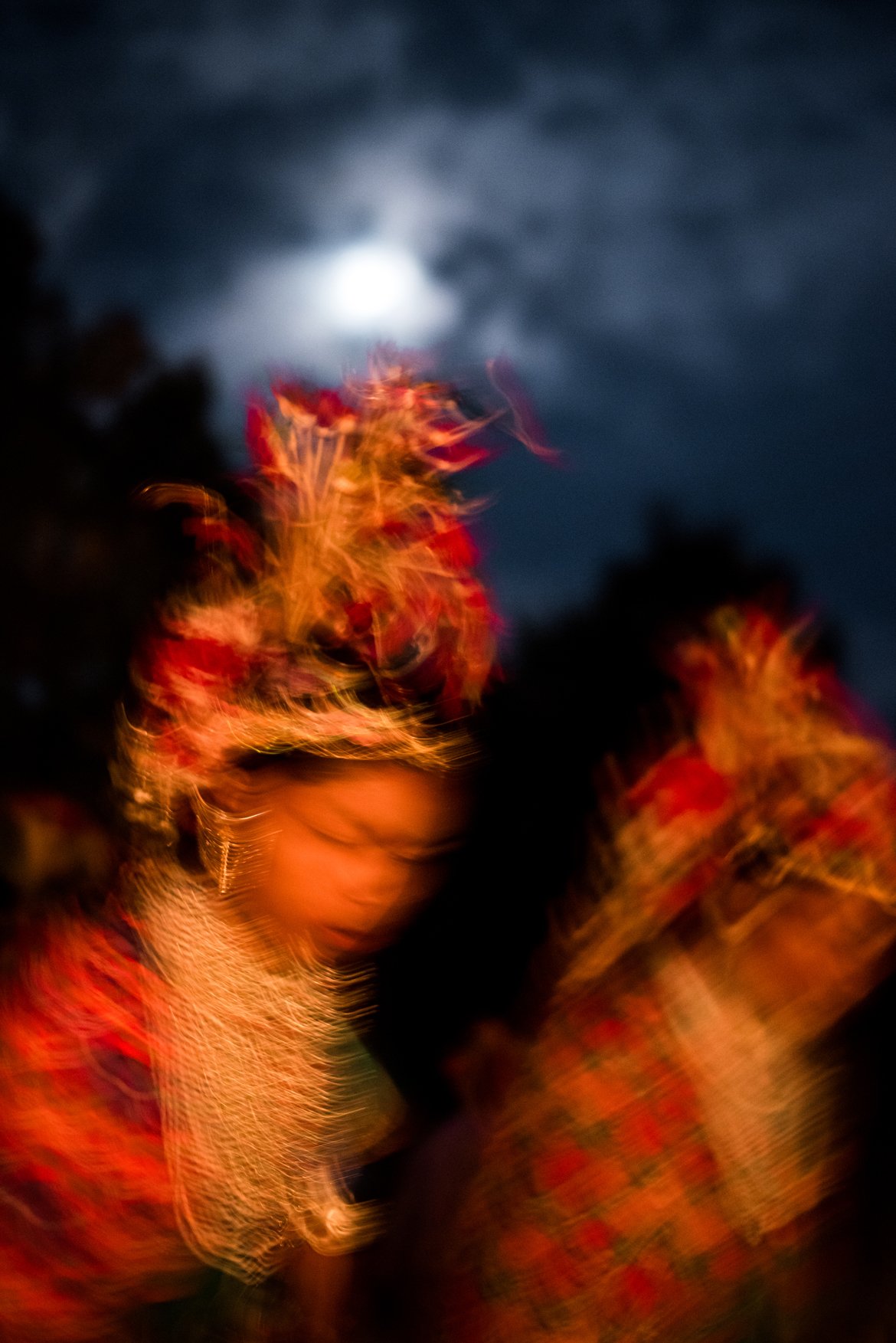
The colourful flowers on top of their heads is called kalgi.
Abhinav Kakkar
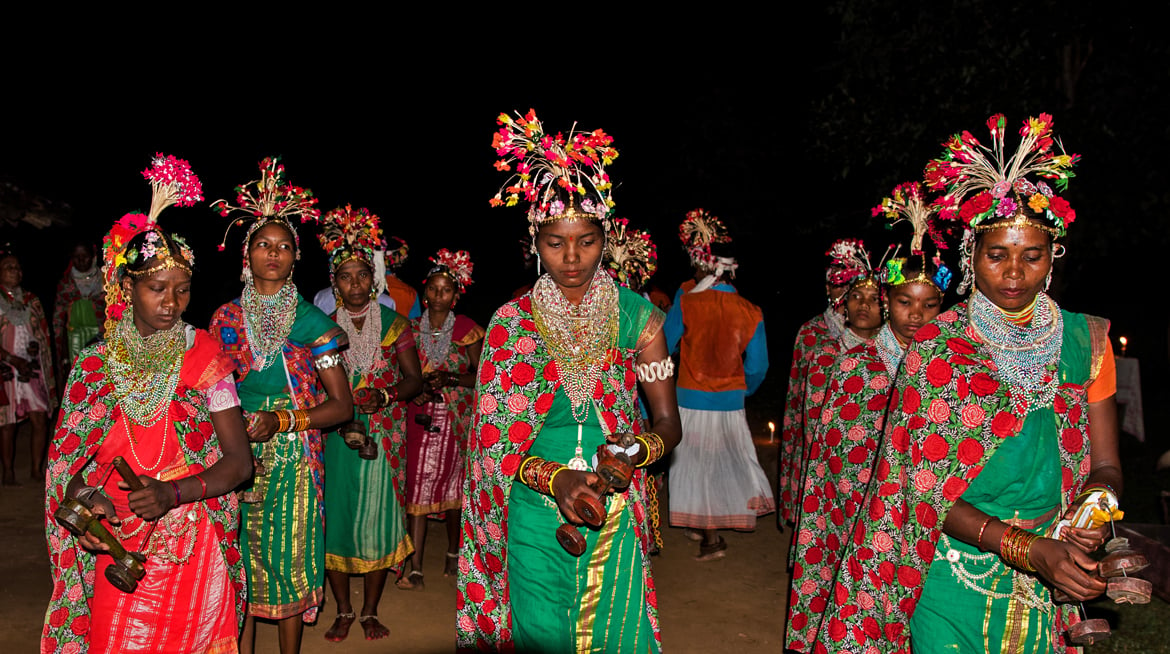
Performers wear traditional attire called begasaaj.
Abhinav Kakkar

A group of Baiga men, whose headdress is made with peacock feather shafts and flowers.
Abhinav Kakkar
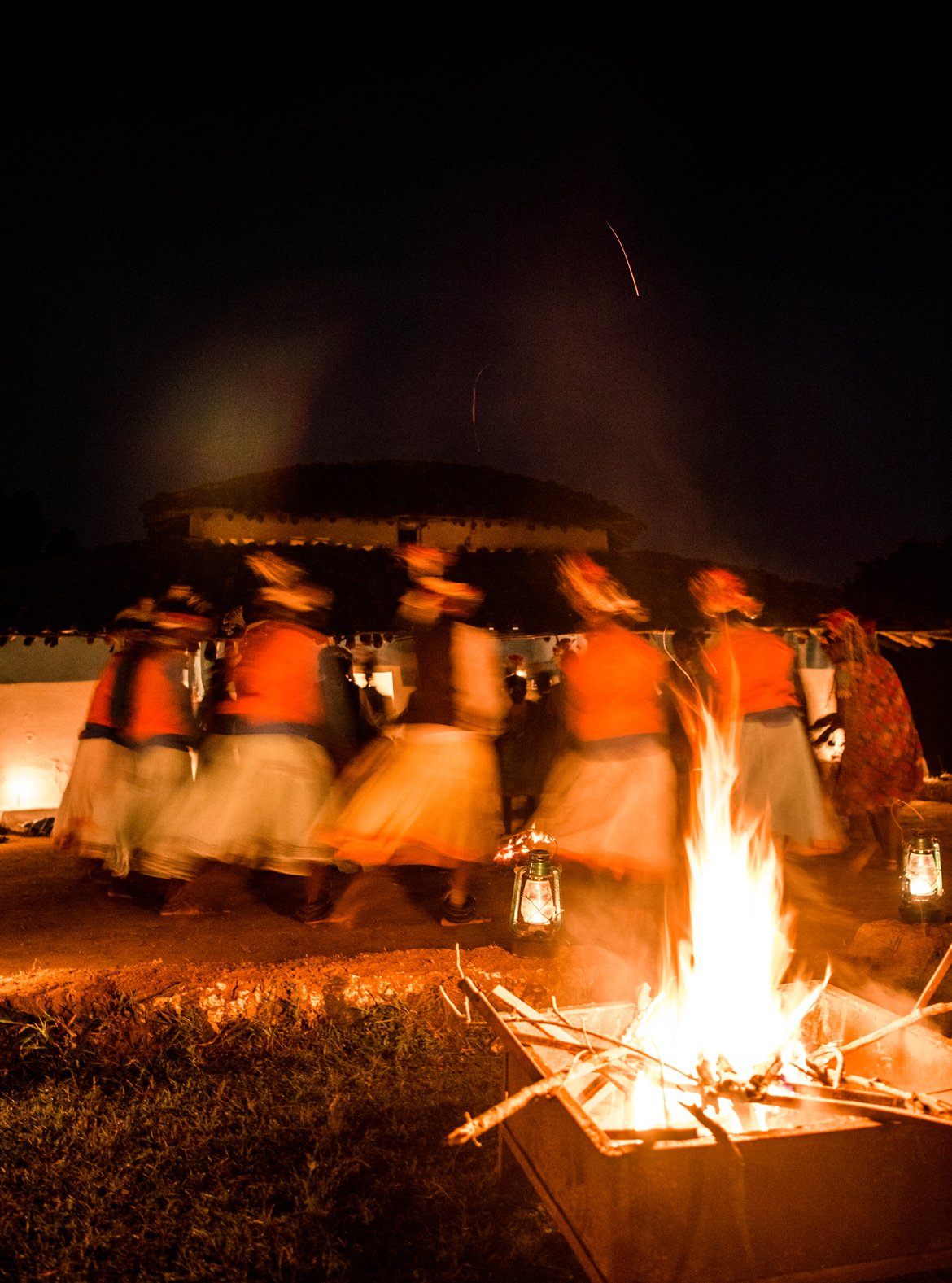
Karma dance performance by the Baiga tribe at Kipling Camp, Kanha.
Abhinav Kakkar
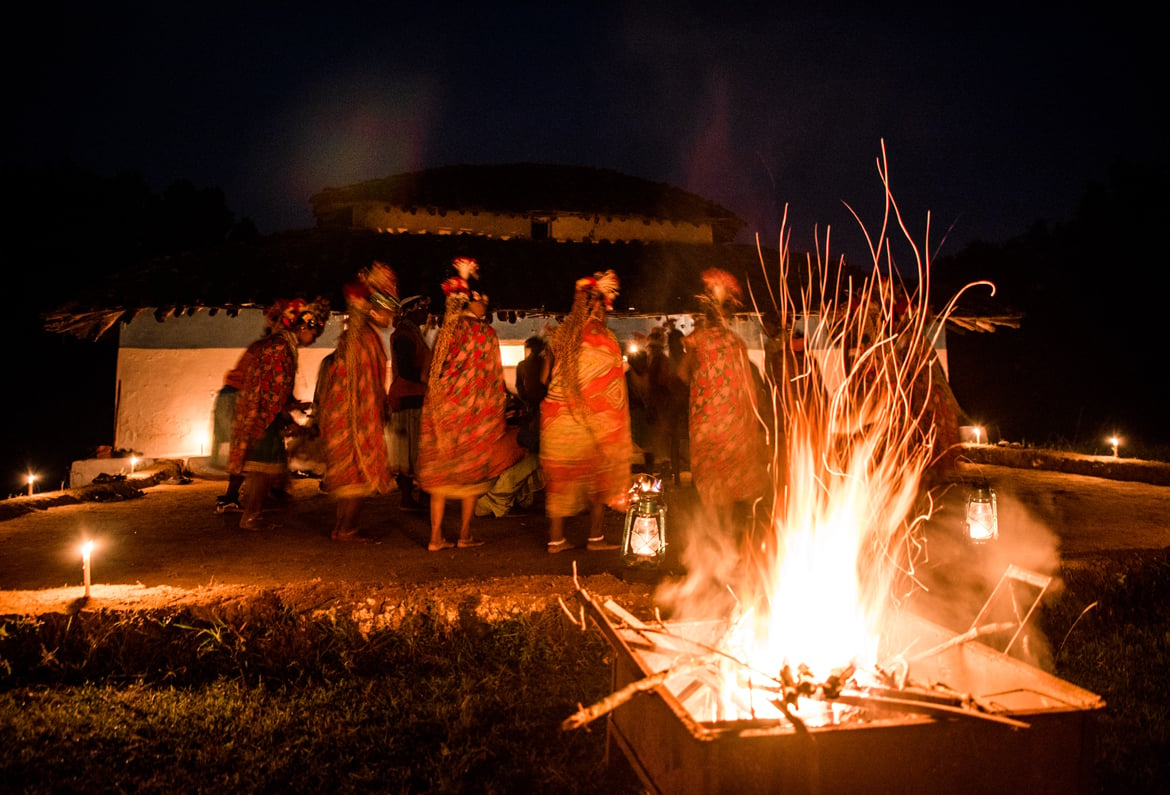
The songs the Baiga sing are mostly about the monsoon, the harvest, and nature.
Abhinav Kakkar

The head of the dance troupe performing at Kipling Camp carries a Mandar drum on his shoulder.
Abhinav Kakkar
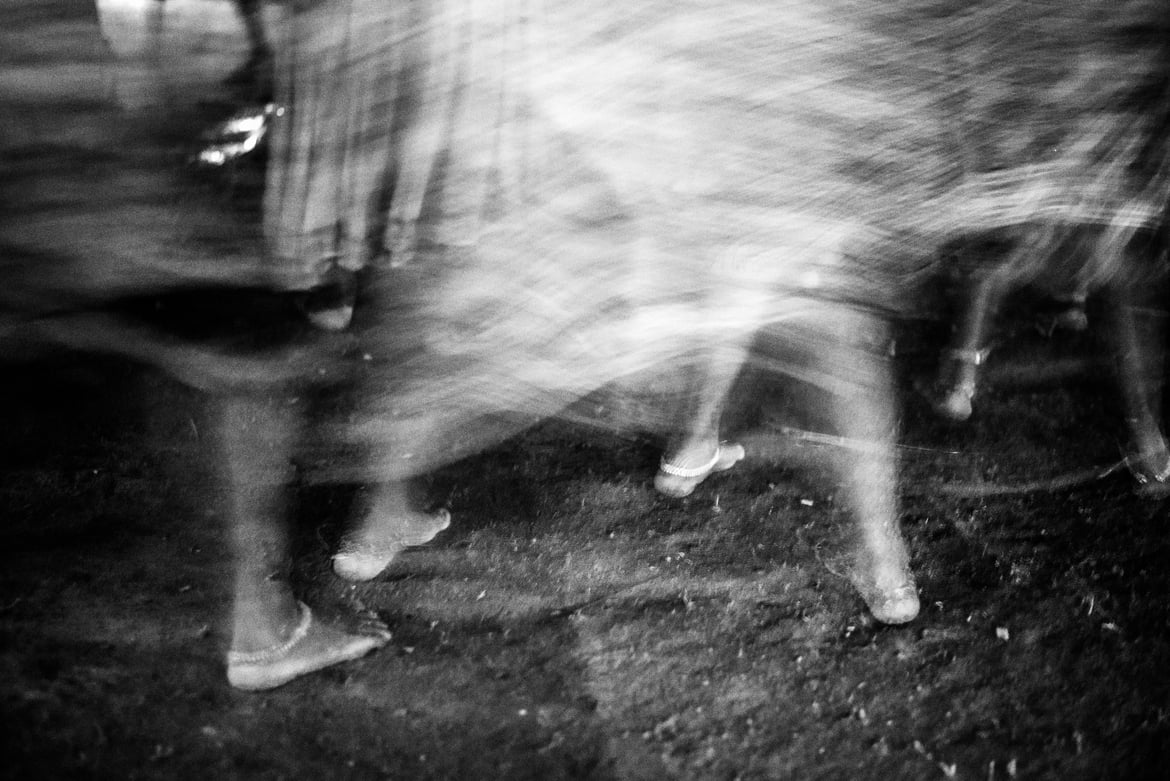
A group of Baiga women perform in a circle. Their metallic anklets add to the rhythm of their songs
Madhya Pradesh MPonmymind 






